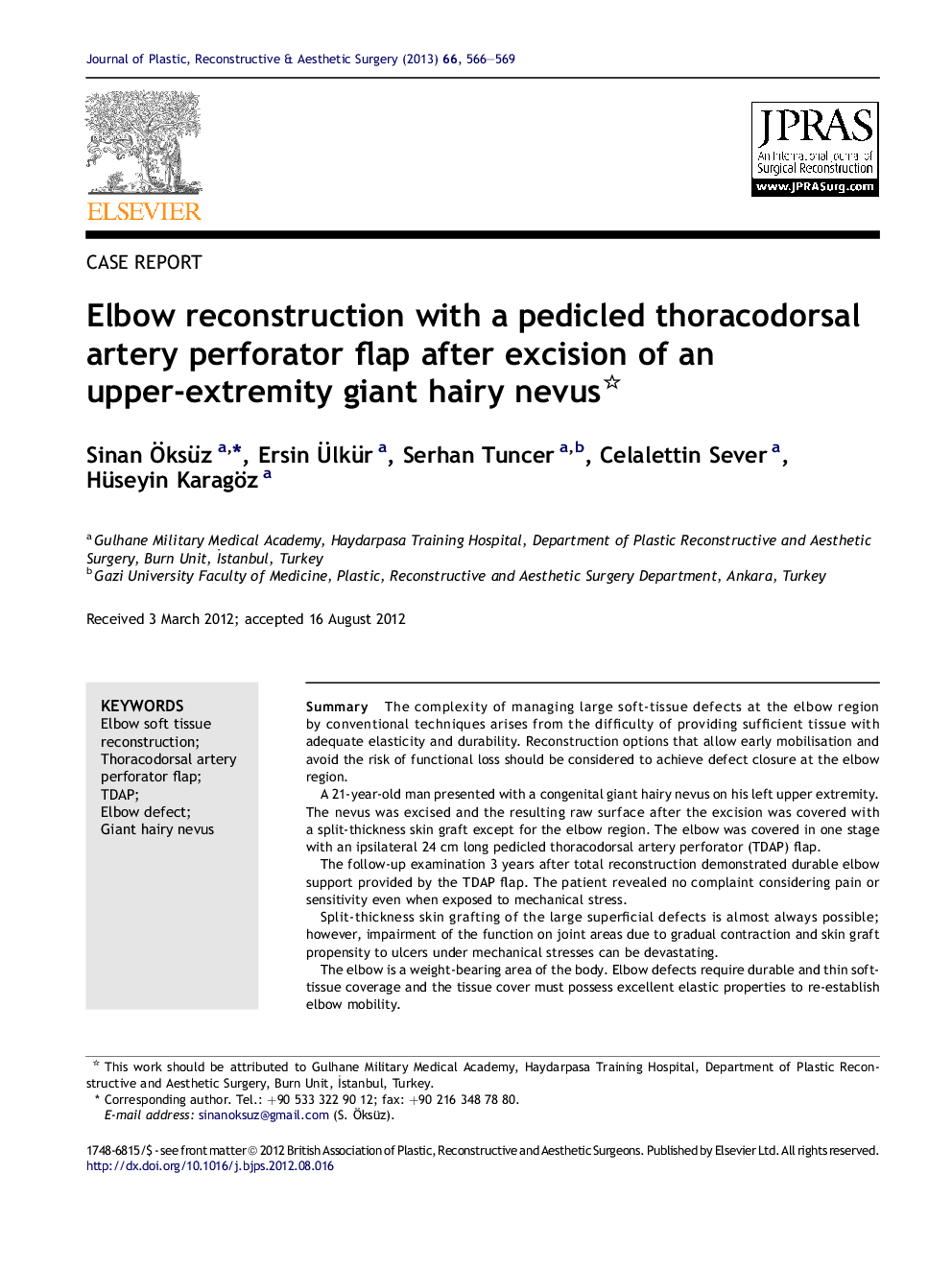| Article ID | Journal | Published Year | Pages | File Type |
|---|---|---|---|---|
| 4118423 | Journal of Plastic, Reconstructive & Aesthetic Surgery | 2013 | 4 Pages |
SummaryThe complexity of managing large soft-tissue defects at the elbow region by conventional techniques arises from the difficulty of providing sufficient tissue with adequate elasticity and durability. Reconstruction options that allow early mobilisation and avoid the risk of functional loss should be considered to achieve defect closure at the elbow region.A 21-year-old man presented with a congenital giant hairy nevus on his left upper extremity. The nevus was excised and the resulting raw surface after the excision was covered with a split-thickness skin graft except for the elbow region. The elbow was covered in one stage with an ipsilateral 24 cm long pedicled thoracodorsal artery perforator (TDAP) flap.The follow-up examination 3 years after total reconstruction demonstrated durable elbow support provided by the TDAP flap. The patient revealed no complaint considering pain or sensitivity even when exposed to mechanical stress.Split-thickness skin grafting of the large superficial defects is almost always possible; however, impairment of the function on joint areas due to gradual contraction and skin graft propensity to ulcers under mechanical stresses can be devastating.The elbow is a weight-bearing area of the body. Elbow defects require durable and thin soft-tissue coverage and the tissue cover must possess excellent elastic properties to re-establish elbow mobility.The TDAP flap is an ideal choice for elbow soft-tissue defects. The longest pedicle length reported for the TDAP flap is 23 cm. In our case, the pedicle length was 24 cm and it was possible to transfer this flap to the elbow on its pedicle.A pedicled TDAP skin flap so as to provide elbow coverage in one stage is a useful choice to retain in one's armamentarium.
